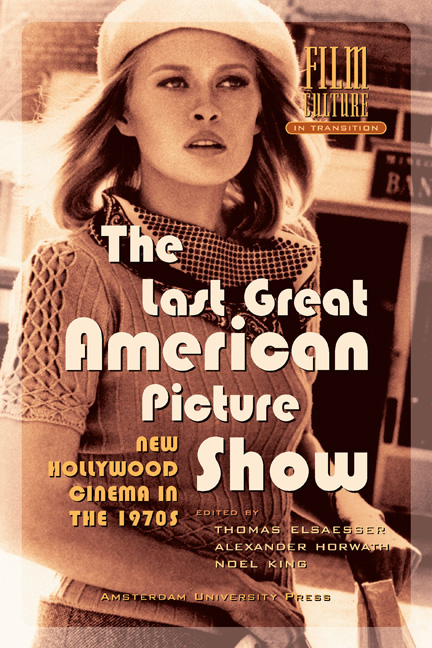The Pathos of Failure: American Films in the 1970s: Notes on the Unmotivated Hero
Published online by Cambridge University Press: 25 January 2021
Summary
Looking at THIEVES Like Us and remembering THEY LIVE BY NIGHT, wanting to compare JEREMIAH Johnson with Run of the Arrow, or thinking of THE NAKED SPUR when watching DELIVERANCE may simply be the typical pastime of someone who has seen too many movies; nonetheless the similarities are also another reminder of how faithful the classical American cinema is to its basic themes and forms. One can safely venture, for instance, that the new Hollywood of Robert Altman, Sidney Pollack and Alan J. Pakula, or of Bob Rafelson, Monte Hellman and Hal Ashby is as fond of mapping out journeys as were the films of Nicholas Ray, Sam Fuller or Anthony Mann in the 1950s. And yet, it is equally evident that this motif has nowadays less of a thematic or dynamic function: journeys are no longer the same drive- and goal-oriented moral trajectories they once were. And although still serving as an oblique metaphor of the archetypal American experience, they now foreground themselves and assume the blander status of a narrative device, sometimes a picaresque support for individual scenes, situations and set-pieces, at other times the ironically admitted pretext to keep the film moving. One wonders whether TWO-LANE BLACKTOP, FIVE EASY PIECES, THE LAST DETAIL, CALIFORNIA SPLIT (to name but a few) will come to be seen as apt examples of a shift, no doubt historically significant, that makes the existential themes of one generation of filmmakers no more than reference points to be quoted by the next – and to be used perhaps in order to scaffold a cautious, but differently constructed architecture of film narrative.
For if the themes remain the same, the attitudes and thereby the forms could not be more different, and there is evidence that in the films just mentioned an aspect of experimentation and meta-cinema is hidden, of the kind familiar only from the masters of classical mise-en-scène and from cinematically self-conscious European directors. What follows is an attempt to speculate in what sense some mainstream American films of the 1970s might be considered ‘experimental’, in the sense of reflecting on the meaning and ideology of forms, especially where these forms are so embedded in a tradition – that of classical Hollywood – as to be self-evident and invisible.
- Type
- Chapter
- Information
- The Last Great American Picture ShowNew Hollywood Cinema in the 1970s, pp. 279 - 292Publisher: Amsterdam University PressPrint publication year: 2004
- 3
- Cited by



